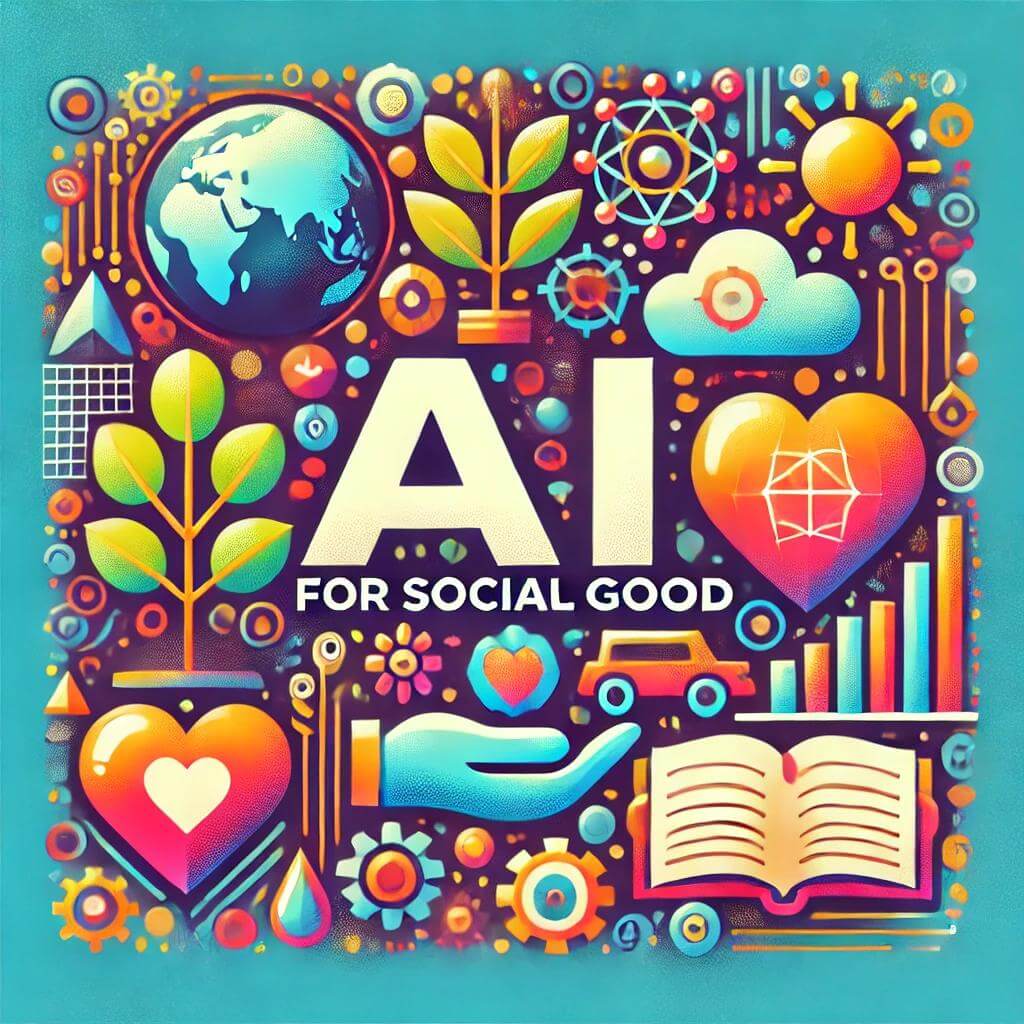AI for Social Good: Tackling Global Challenges with Artificial Intelligence
Artificial Intelligence (AI) has proven to be a transformative force, addressing some of the world’s most pressing challenges. By leveraging AI, societies can combat climate change, improve disaster response, enhance food security, and provide education to underserved communities. This article explores how AI is driving social good, with real-world examples of its applications and the potential to scale solutions globally.
AI Applications in Combating Climate Change
AI plays a crucial role in addressing climate change by enabling better environmental monitoring and resource management.
Monitoring Climate Patterns
AI systems analyze vast amounts of environmental data to predict climate trends and their impacts. Key uses include:
- Early Warning Systems: AI predicts extreme weather events, providing time to prepare and mitigate damage.
- Carbon Emission Tracking: AI helps track greenhouse gas emissions, enabling governments and companies to meet sustainability goals.
Optimizing Renewable Energy
AI enhances the efficiency of renewable energy systems by:
- Predicting energy demand and supply for solar and wind farms.
- Optimizing the integration of renewable energy into power grids.
| AI Application | Function | Outcome |
|---|---|---|
| Climate Pattern Analysis | Predicts weather patterns and climate trends | Informed decision-making |
| Renewable Energy Management | Improves efficiency of solar and wind energy | Increased sustainability |
By applying AI, governments and organizations can implement more effective climate strategies, paving the way for a sustainable future.
Improving Disaster Response with AI
AI enhances disaster response by improving preparedness, detection, and recovery efforts.
Disaster Preparedness
AI-driven models analyze historical data to predict the likelihood and severity of disasters, such as floods, earthquakes, or hurricanes. This information helps authorities:
- Plan evacuation routes.
- Allocate resources in high-risk areas.
Real-Time Disaster Detection
During disasters, AI provides real-time insights, such as:
- Earthquake Detection: AI systems monitor seismic activity to issue early warnings.
- Flood Monitoring: AI-based satellite imagery tracks rising water levels.
Recovery Efforts
AI supports recovery by:
- Identifying affected areas through drone imagery.
- Optimizing aid distribution to communities in need.
| Disaster Phase | AI Contribution | Benefit |
|---|---|---|
| Preparedness | Predicts disaster risks | Reduces potential impact |
| Detection | Provides real-time alerts | Enhances response times |
| Recovery | Guides resource allocation and damage assessment | Accelerates rebuilding efforts |
Through AI, disaster response becomes faster and more efficient, saving lives and reducing long-term impacts.
Enhancing Food Security with AI
AI addresses food security by improving agricultural productivity and reducing waste.
Precision Agriculture
AI-driven tools help farmers optimize their operations by:
- Monitoring crop health using drones and sensors.
- Predicting pest outbreaks and suggesting preventive measures.
Reducing Food Waste
AI streamlines supply chains to minimize food waste:
- Inventory Management: AI predicts demand, ensuring appropriate stock levels.
- Distribution Optimization: AI determines the most efficient routes for food transportation.
| AI Application | Function | Outcome |
|---|---|---|
| Precision Agriculture | Monitors crop health and optimizes resources | Increased yields and reduced costs |
| Food Waste Reduction | Predicts demand and optimizes logistics | Less spoilage and improved food access |
AI-powered agricultural solutions promote sustainability and help address global hunger.
Providing Access to Education in Underserved Areas
AI expands educational opportunities by making learning more accessible and personalized.
Bridging Educational Gaps
AI tools bring education to remote and underserved areas through:
- Language Translation: AI translates educational materials into local languages.
- Online Learning Platforms: AI-powered platforms provide resources tailored to student needs.
Personalized Learning Experiences
AI enables adaptive learning, adjusting content to suit individual learning styles and paces.
| Education Challenge | AI Solution | Impact |
|---|---|---|
| Accessibility | Provides online resources and language translation | Increases reach to remote areas |
| Personalization | Adapts content to individual learning styles | Enhances engagement and outcomes |
By integrating AI into education, societies can bridge gaps and empower students worldwide.
Examples of Successful Projects
Several AI projects have demonstrated the potential of AI for social good:
- Google’s Project Loon: Provides internet access to remote areas using AI-managed balloons.
- IBM’s AI for Climate: Helps businesses reduce their carbon footprints through AI insights.
- FAO’s Agricultural Monitoring: Uses AI to support farmers in developing countries with crop management tools.
These initiatives showcase how AI can drive meaningful social impact on a global scale.
Scaling AI Solutions Globally
To maximize the impact of AI for social good, efforts must focus on scalability and inclusivity.
Strategies for Scaling
- Collaboration: Governments, NGOs, and tech companies must work together to fund and implement AI solutions.
- Open-Source AI: Making AI tools publicly available encourages innovation and adoption.
- Capacity Building: Training programs ensure communities can effectively use AI technologies.
| Scaling Strategy | Benefit |
|---|---|
| Collaboration | Ensures resources and expertise are shared |
| Open-Source AI | Fosters innovation and accessibility |
| Capacity Building | Empowers local communities to adopt AI solutions |
Scaling AI solutions globally ensures their benefits reach those who need them most.
Conclusion
AI offers immense potential to address global challenges, from combating climate change and improving disaster response to enhancing food security and education. By implementing scalable and inclusive strategies, societies can harness the power of AI for social good. With continued collaboration and innovation, AI can become a transformative force, improving lives and creating a more equitable world.


Post Comment